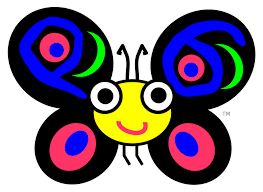| The Raku Beginner Tutorial |
| Written by Nikos Vaggalis | |||
| Thursday, 21 November 2019 | |||
|
If you want to get to grips with Raku, formerly Perl 6, there is a 30- part YouTube playlist to get you started with it.
After splitting from Perl 5 and its renaming from Perl 6 to Raku, a move that has cleared up much confusion (see Perl and Raku Both Anticipating Newfound Glory if you missed the story to date) the time has come to familiarize yourself with the language up and close. There are many ways to get started, such as with a good book like Think Perl 6 which I awarded a 5-star review when I reviewed it, but what better way to get a quick overview than a few well-made (and free) video tutorials? Yanzhan Yang has provided us with just that and, as a matter of fact, some of the material that he bases his tutorials on comes from the Think Perl6 book. The videos themselves are recordings of Yanzhan coding and explaining line-by-line what he's doing. As such it's very hands-on. There's a total of 30 lessons, one per video. Lesson 1 : Basic Setup. The lessons might be specifically about the Raku language but in fact they serve as an introduction to programming by means of Raku.For example, the lesson on variables isn't just on how Raku goes about them but also on the underlying concept of what a variable actually is. The same holds true for successive lessons. The next, on Data types, looks at what each of the Integer, the Rational and the String are and then he introduces Expressions and Statements, Functions, Conditionals and Loops. Lesson 10 - Recursion - marks the beginnings of the more advanced concepts. Parameter Constraints; Multi SubRoutines; Map, Reduce and Filter are at this level too. So far so good, as the general programming concepts go. After this the tutorials become Raku-specific covering its intricacies, start with Grammars and continuing with Meta Operators, Phasers and the rest. These subjects are likely to be a bit too difficult for the total newbie, that the tutorials assume they are addressing, to grasp. Nevertheless Yanzhan provides a very good overview of the language without going too deep. Who should watch it then? Here's a checklist:
If you say "Yes" to any of them, then these tutorials are for you. They are best viewed in the company of a good book, such as Think Perl 6.
More InformationRelated ArticlesPerl and Raku Both Anticipating Newfound Glory Can Regular Expressions Be Safely Reused Across Languages?
To be informed about new articles on I Programmer, sign up for our weekly newsletter, subscribe to the RSS feed and follow us on Twitter, Facebook or Linkedin.
Comments
or email your comment to: comments@i-programmer.info <ASIN:1491980559> |
|||
| Last Updated ( Thursday, 21 November 2019 ) |


